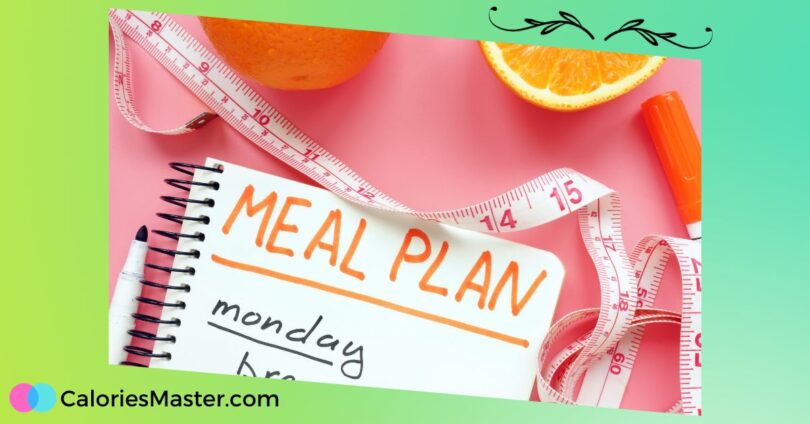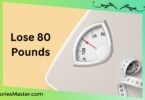Losing weight can be a challenging task, especially when it comes to planning your meals. A well-planned meal can make a significant difference in achieving your weight loss goals. With the right meal plan, you can lose weight while still enjoying delicious and satisfying meals.
A meal plan for weight loss should be based on a balanced diet that provides all the necessary nutrients while keeping the calorie intake in check. A healthy meal plan should include a variety of fruits and vegetables, lean proteins, whole grains, and healthy fats.
It is essential to avoid processed foods, sugary drinks, and high-calorie snacks.
Planning your meals in advance can help you stay on track with your weight loss goals. It can also save you time and money by reducing the number of times you eat out. In this article, we will provide you with a comprehensive guide to creating a meal plan for weight loss that is both healthy and delicious.
Understanding Weight Loss
Losing weight can be a challenging task, but it is achievable with the right approach. Understanding how weight loss works is the first step towards achieving your weight loss goals.
Calories in vs Calories out
Weight loss is all about creating a calorie deficit. This means that you must burn more calories than you consume. The basic principle of weight loss is that you need to consume fewer calories than your body burns in a day. This will force your body to use stored fat as energy, resulting in weight loss.
The Importance of a Healthy Diet
A healthy diet is essential for weight loss. Eating a balanced diet that is low in calories and high in nutrients is key to achieving your weight loss goals. This means reducing your intake of processed foods, sugary drinks, and snacks, and increasing your intake of fruits, vegetables, lean proteins, and whole grains.
Exercise and Weight Loss
Exercise is an important part of any weight loss plan. It helps to burn calories, build muscle, and increase your metabolism. Aim to do at least 30 minutes of moderate-intensity exercise most days of the week. This can include activities such as walking, cycling, swimming, or jogging.
The Benefits of Tracking Progress
Tracking your progress is an important part of any weight loss plan. It helps you to stay motivated and monitor your progress. Keep a record of your weight, measurements, and food intake. This will help you to identify areas where you need to make changes and adjust your plan accordingly.
Remember, weight loss is a journey, and it takes time and effort to achieve your goals. Stay focused and committed, and you will see results.
Importance of Meal Planning
Meal planning is an essential component of any weight loss journey. It involves organising your meals in advance, which can help you make healthier food choices and avoid impulsive eating. Here are some reasons why meal planning is crucial for weight loss:
Helps You Make Healthier Choices
When you plan your meals, you have more control over what you eat. You can choose healthier options and avoid foods that are high in calories, sugar, and unhealthy fats. Planning your meals also ensures that you get all the nutrients your body needs to function correctly.
Saves Time and Money
Meal planning can save you time and money in the long run. When you plan your meals, you can buy groceries in bulk and avoid unnecessary trips to the store. You can also prepare meals in advance, which can save you time during the week.
Reduces Stress
Meal planning can help reduce stress and anxiety associated with mealtime. When you plan your meals, you don’t have to worry about what to cook or eat. You can also avoid the stress of last-minute meal decisions, which can lead to unhealthy food choices.
Helps You Stay on Track
When you plan your meals, you have a clear idea of what you’re going to eat, which can help you stay on track with your weight loss goals. You can also track your progress and make adjustments to your meal plan as needed.
In conclusion, meal planning is an essential tool for weight loss. It helps you make healthier choices, saves time and money, reduces stress, and helps you stay on track with your goals.
Creating a Balanced Diet
To achieve weight loss, it is important to create a balanced diet that provides the body with all the necessary nutrients. A balanced diet should include a variety of protein sources, carbohydrate choices, and healthy fats. Here are some guidelines to help you create a balanced diet:
Protein Sources
Protein is an important nutrient that helps build and repair tissues in the body. Good sources of protein include:
- Lean meats such as chicken, turkey, and fish
- Eggs
- Legumes such as beans, lentils, and chickpeas
- Nuts and seeds
When choosing protein sources, it is important to opt for lean options that are low in saturated fat and calories. It is also important to vary your protein sources to ensure that you are getting all the essential amino acids your body needs.
Carbohydrate Choices
Carbohydrates are an important source of energy for the body. However, not all carbohydrates are created equal. Good carbohydrate choices include:
- Whole grains such as brown rice, quinoa, and whole wheat bread
- Fruits and vegetables
- Legumes such as beans and lentils
When choosing carbohydrate sources, it is important to opt for complex carbohydrates that are high in fibre and low in sugar. These carbohydrates are digested more slowly, which helps keep you feeling full for longer.
Healthy Fats
Healthy fats are an important part of a balanced diet. Good sources of healthy fats include:
- Avocado
- Nuts and seeds
- Olive oil
- Fatty fish such as salmon and tuna
When choosing fats, it is important to opt for unsaturated fats that are low in saturated fat and cholesterol. These fats can help reduce inflammation in the body and improve heart health.
In summary, creating a balanced diet that includes a variety of protein sources, carbohydrate choices, and healthy fats is essential for weight loss. By following these guidelines, you can ensure that your body is getting all the necessary nutrients it needs to function optimally.
Portion Control
Portion control is an essential tool in weight loss management. It is a simple yet effective way to manage your food intake and achieve your weight loss goals. By controlling your portion sizes, you can reduce your calorie intake without feeling deprived or hungry.
Here are some tips to help you with portion control:
- Use smaller plates: Using smaller plates can help you reduce your portion sizes without feeling like you are missing out on food.
- Measure your food: Use measuring cups or a food scale to measure your food accurately. This will help you avoid overeating and ensure you are eating the right amount of food.
- Eat slowly: Eating slowly can help you feel full faster and avoid overeating.
- Fill up on fruits and vegetables: Fruits and vegetables are low in calories and high in fibre, which can help you feel full for longer.
- Avoid distractions: Avoid eating while watching TV or using your phone. This can lead to mindless eating and overeating.
- Practice moderation: It’s okay to indulge in your favourite foods occasionally, but practice moderation and control your portion sizes.
By incorporating these tips into your daily routine, you can manage your portion sizes and achieve your weight loss goals.
Meal Timing
When it comes to weight loss, meal timing is an important factor to consider. The timing of your meals can affect your metabolism, hunger levels, and energy levels throughout the day. Here are some tips for meal timing:
Eat Breakfast
Starting your day with a healthy breakfast can help kickstart your metabolism and prevent overeating later in the day. Aim to eat breakfast within an hour of waking up to give your body the fuel it needs to start the day.
Spread Out Meals
Eating smaller, more frequent meals throughout the day can help keep your metabolism revved up and prevent overeating. Aim to eat every 3-4 hours to keep your hunger levels in check.
Finish Eating Early
Try to finish your last meal of the day at least 2-3 hours before bedtime. Eating too close to bedtime can interfere with sleep and digestion, which can negatively impact weight loss efforts.
Listen to Your Body
Ultimately, the best meal timing for weight loss is the one that works best for you and your body. Pay attention to your hunger levels and energy levels throughout the day and adjust your meal timing accordingly.
In summary, meal timing can play a role in weight loss efforts. Eating a healthy breakfast, spreading out meals, finishing eating early, and listening to your body are all important factors to consider.
Hydration and Weight Loss
Hydration is essential for weight loss. Drinking enough water can help you feel fuller, reduce your appetite, and boost your metabolism. When you’re dehydrated, your body may mistake thirst for hunger, leading you to eat more than you need.
In addition to water, you can also hydrate with low-calorie drinks like herbal tea, black coffee, or sparkling water. However, be mindful of added sugars and calories in drinks like fruit juice, soda, or sports drinks, as they can sabotage your weight loss efforts.
To ensure you’re getting enough water, aim to drink at least 8-10 glasses of water per day. You can also use thirst as a guide – if you’re thirsty, it’s a sign that you need to drink more.
Another way to stay hydrated is to eat foods with a high water content, such as fruits and vegetables. Examples include watermelon, cucumber, strawberries, and spinach. These foods are not only hydrating but also low in calories, making them a great addition to a weight-loss meal plan.
In summary, staying hydrated is crucial for weight loss. Drinking enough water, choosing low-calorie drinks, and eating water-rich foods can help you achieve your weight loss goals.
Sample Meal Plan
When it comes to weight loss, having a meal plan can be a helpful tool to stay on track and reach your goals. Here is a sample meal plan for a day to give you an idea of what a healthy and balanced diet can look like.
Breakfast Options
- Greek yoghurt with mixed berries and a sprinkle of nuts
- Avocado toast with a poached egg and cherry tomatoes
- Oatmeal with sliced banana and a drizzle of honey
Lunch Ideas
- Grilled chicken salad with mixed greens, cherry tomatoes, cucumber, and balsamic vinaigrette
- Quinoa bowl with roasted vegetables and chickpeas
- Whole-wheat wrap with turkey, hummus, and vegetables
Dinner Recipes
- Baked salmon with roasted asparagus and brown rice
- Grilled chicken with sweet potato wedges and green beans
- Lentil soup with whole-grain bread
Snack Suggestions
- Apple slices with almond butter
- Carrot sticks with hummus
- Greek yogurt with sliced cucumber and a sprinkle of dill
Remember to listen to your body and adjust the portion sizes and calorie intake according to your individual needs. It is also important to stay hydrated by drinking plenty of water throughout the day.
Adjusting Your Meal Plan
When it comes to weight loss, it’s important to remember that everyone’s body is different. What works for one person may not work for another. That’s why it’s important to adjust your meal plan to fit your specific needs and goals.
Here are some tips for adjusting your meal plan:
- Monitor your progress: Keep track of your weight loss progress and adjust your meal plan accordingly. If you’re not seeing the results you want, you may need to make some changes.
- Increase or decrease portion sizes: If you’re not losing weight, you may need to decrease your portion sizes. On the other hand, if you’re losing weight too quickly, you may need to increase your portion sizes.
- Change up your meals: Eating the same thing every day can get boring and may not provide you with the nutrients you need. Try switching up your meals to keep things interesting and make sure you’re getting all the nutrients your body needs.
- Get enough protein: Protein is important for weight loss because it helps you feel full and preserves muscle mass. Make sure you’re getting enough protein in your meals.
- Don’t cut out entire food groups: Cutting out entire food groups can lead to nutrient deficiencies and may not be sustainable in the long term. Instead, focus on making healthier choices within each food group.
By adjusting your meal plan to fit your specific needs and goals, you’ll be more likely to see the results you want.
Physical Activity and Weight Loss
Physical activity plays a crucial role in weight loss. While diet is the most important factor in losing weight, exercise can help you burn calories and increase your metabolism, making it easier to achieve your weight loss goals.
A combination of cardio and strength training exercises can help you lose weight and improve your overall health. Cardio exercises such as running, swimming, and cycling can help you burn calories and improve your cardiovascular health.
Strength training exercises such as weightlifting and bodyweight exercises can help you build muscle and increase your metabolism, which can help you burn more calories even when you’re at rest.
It’s important to find physical activities that you enjoy and that fit into your lifestyle. This can help you stay motivated and make exercise a regular part of your routine. You don’t need to spend hours at the gym every day to see results. Even 30 minutes of moderate exercise most days of the week can help you lose weight and improve your health.
In addition to structured exercise, it’s important to be active throughout the day. Simple activities such as walking, taking the stairs, and doing household chores can help you burn more calories and improve your overall health.
Remember, weight loss is a journey, and physical activity is just one part of the equation. It’s important to be patient and consistent with your diet and exercise habits to see lasting results.
Monitoring Progress
Monitoring your progress is a crucial part of achieving your weight loss goals. It helps you stay on track and make adjustments to your meal plan as needed. Here are some ways to monitor your progress:
Weighing Yourself
Weighing yourself regularly is an effective way to monitor your progress. We recommend weighing yourself once a week at the same time of day, preferably in the morning after using the bathroom. Keep track of your weight in a journal or spreadsheet so you can see your progress over time.
Measuring Your Body
In addition to weighing yourself, measuring your body can give you a more accurate picture of your progress. Use a tape measure to measure your waist, hips, thighs, and arms. Keep track of your measurements in the same journal or spreadsheet as your weight.
Tracking Your Food Intake
Tracking your food intake can help you identify areas where you need to make changes to your meal plan. Use a food diary or app to record everything you eat and drink. Be honest with yourself and record everything, even if it’s just a small snack.
Setting Realistic Goals
Setting realistic goals is important for monitoring your progress. Don’t expect to lose a lot of weight in a short amount of time. Aim for a weight loss of 1-2 pounds per week. This may not seem like a lot, but it’s a healthy and sustainable rate of weight loss.
Celebrating Your Successes
Finally, don’t forget to celebrate your successes along the way. Whether it’s losing a few pounds or fitting into a smaller size of clothing, take the time to acknowledge your achievements and be proud of yourself. This will help keep you motivated and on track to achieving your weight loss goals.
Meal Plan for Weight Loss – Conclusion
In conclusion, weight loss meal plans can be an effective tool for achieving weight loss goals. However, it is important to remember that sustainable weight loss requires a combination of healthy eating habits, regular physical activity, and lifestyle changes.
When creating a weight loss meal plan, it is important to focus on nutrient-dense foods such as fruits, vegetables, whole grains, lean proteins, and healthy fats. Portion control is also key, as consuming too many calories can hinder weight loss progress.
It is also important to consult with a healthcare professional before starting any weight loss program, especially if you have any underlying medical conditions.
By following a well-balanced weight loss meal plan and making lifestyle changes, you can achieve your weight loss goals and improve your overall health and well-being.









